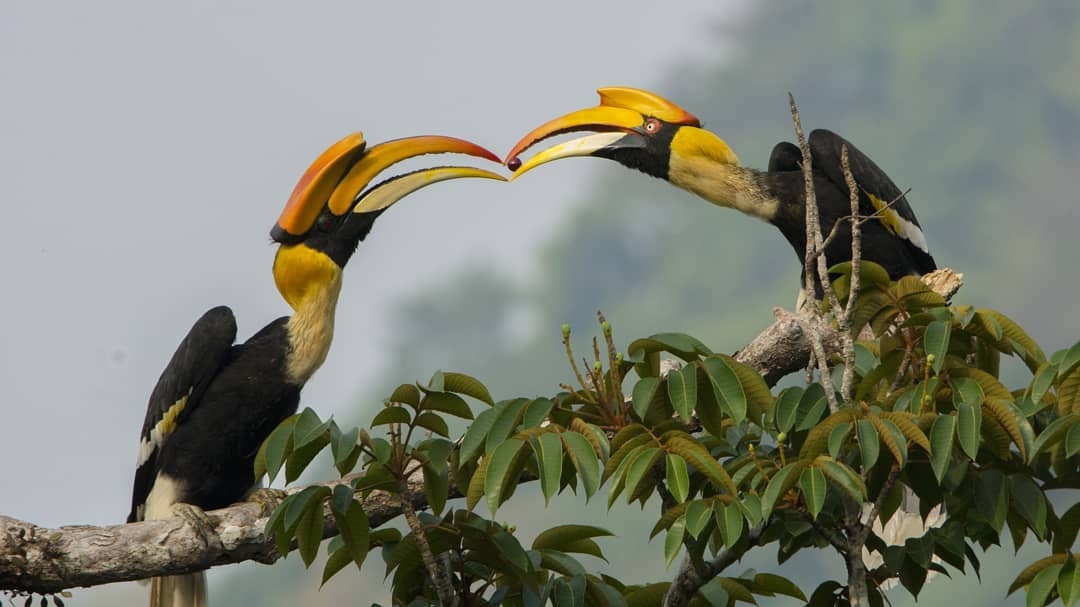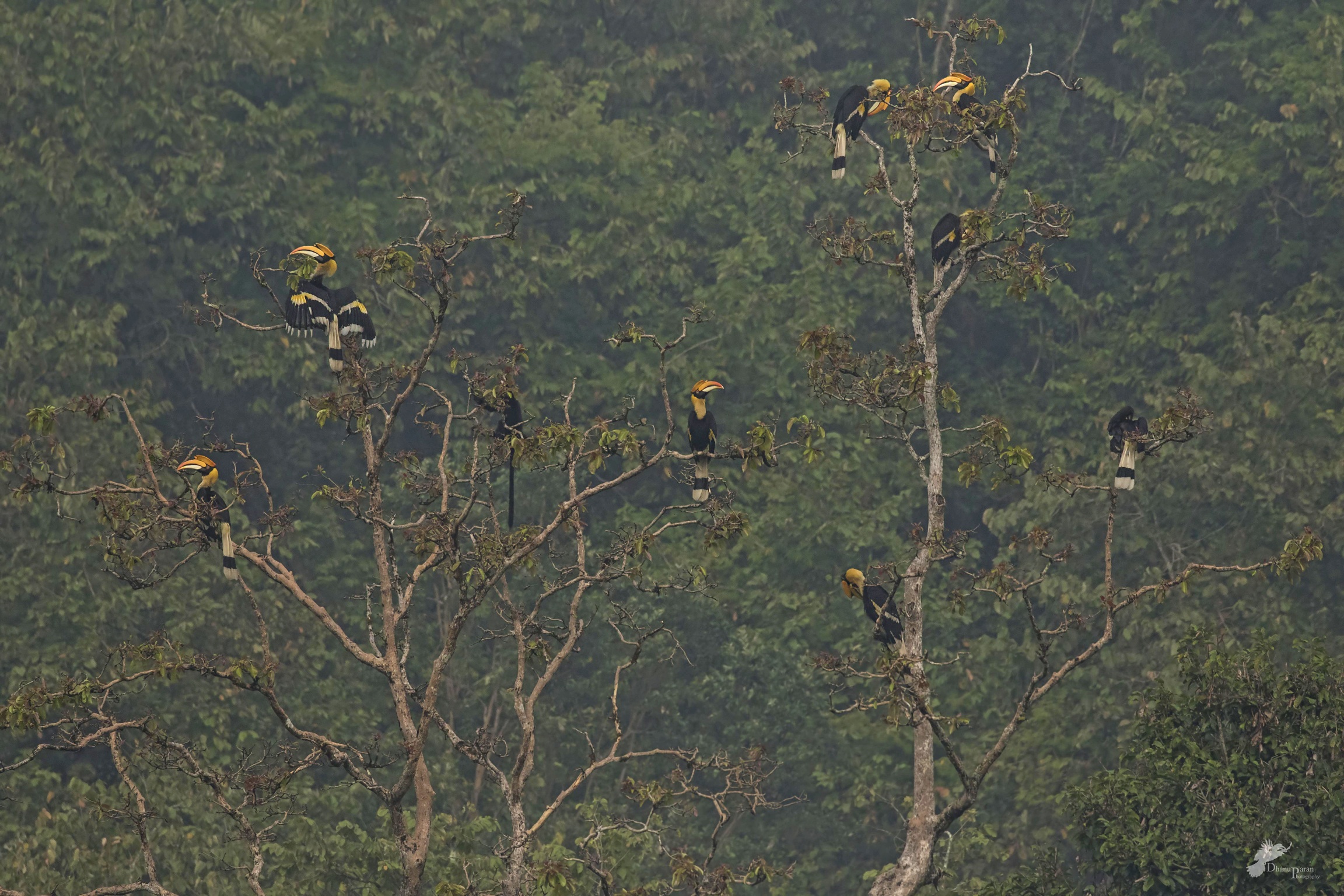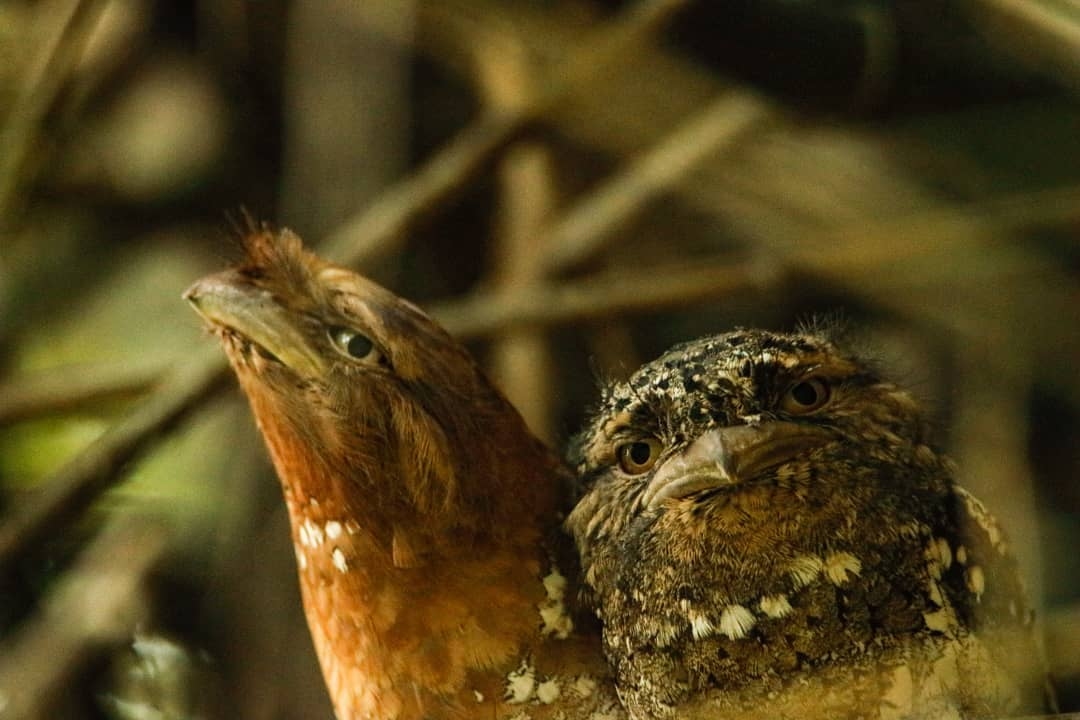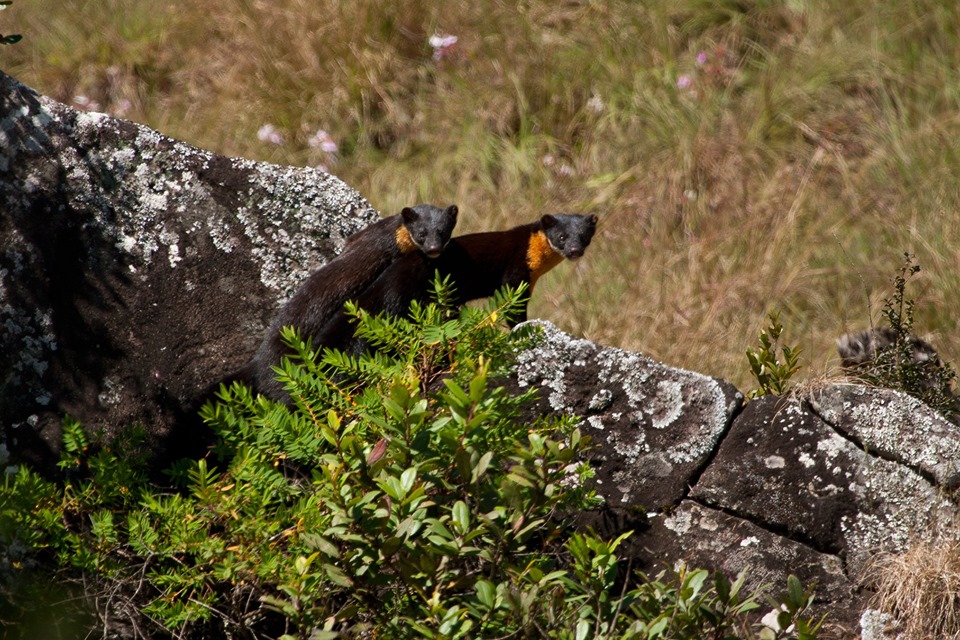It was a monsoon morning in the Anamalai hills. Ferns and shrubs were dancing to the pitter-patter of water droplets falling from the canopy. Very few birds were vocal as many of them were busy trying to keep dry before they go hunting for their meals. Malabar Giant Squirrels and Nilgiri Langurs were contemplating whether to take a rest in the misty weather as they were moving across tree canopies clumsily. I too, was soaked to the bone, walking towards the camp shed. I was welcomed to the camp with a cup of steaming black tea . As I was cherishing the hot tea, one forest watcher entered the camp with awed eyes and asked me to follow him. I grabbed my camera and a pair of binoculars and started walking hurriedly to match his pace. After a short walk, we were standing in the middle of a shola forest patch. He pointed to the forest floor and asked me to spot something. That something turned out to be one among the rare reptiles, tiny and endemic to the forests of Anamalais— the Forest Cane Turtle!
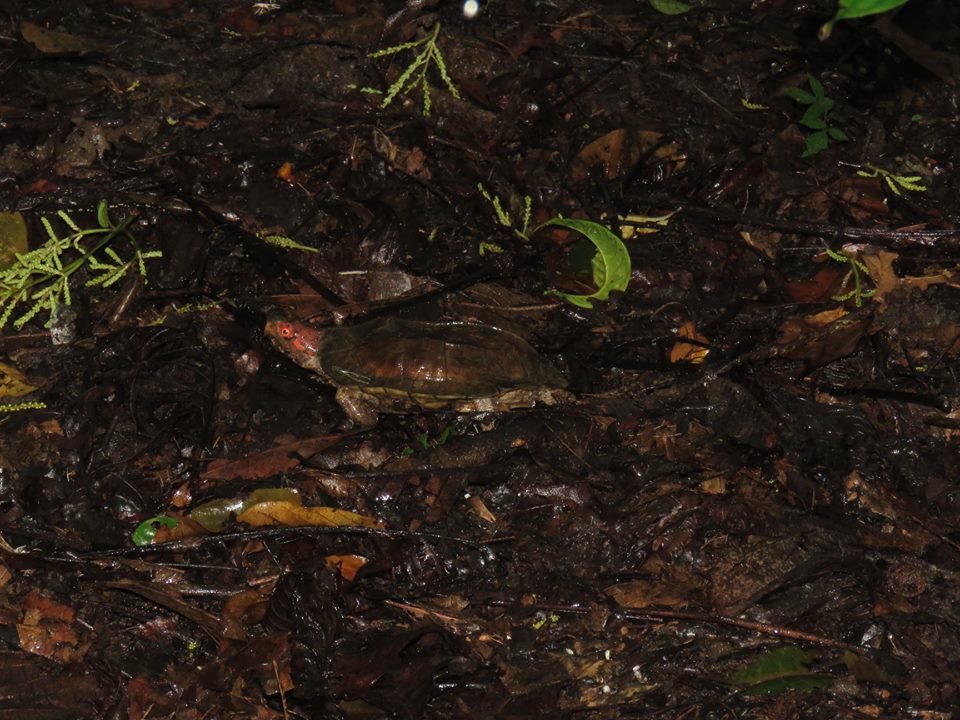
After scanning the forest floor for a while, I spotted this brilliantly camouflaged turtle, just about the size of my palm. The tiny little fellow was diving into a thick blanket of leaf litter that was very easy to miss. I took a closer look at this green-shelled fellow, who was now conscious of our presence. He quickly contracted himself into his carapace- the shell.
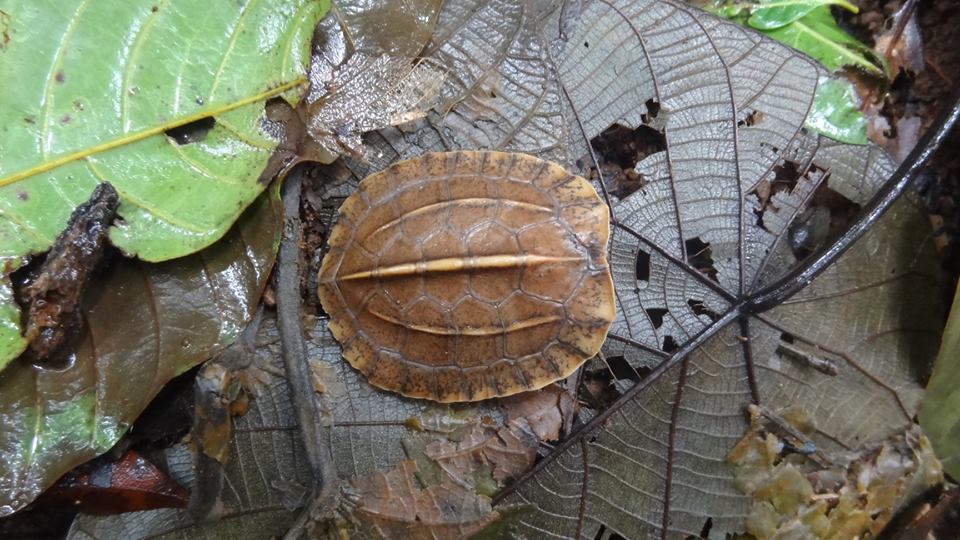
The relatively flatter carapace with a prominent middle ridge resembled a leaf fallen to the ground. The brownish-green carapace blend well with the background of the forest floor. The snout looked similar to the bill of a parrot, elongated and curved at the tip. The eyes were proportionately bigger to its body size with yellow iris around black pupil. Males have bright red, yellow and black head; females are drab and with larger body size than males.
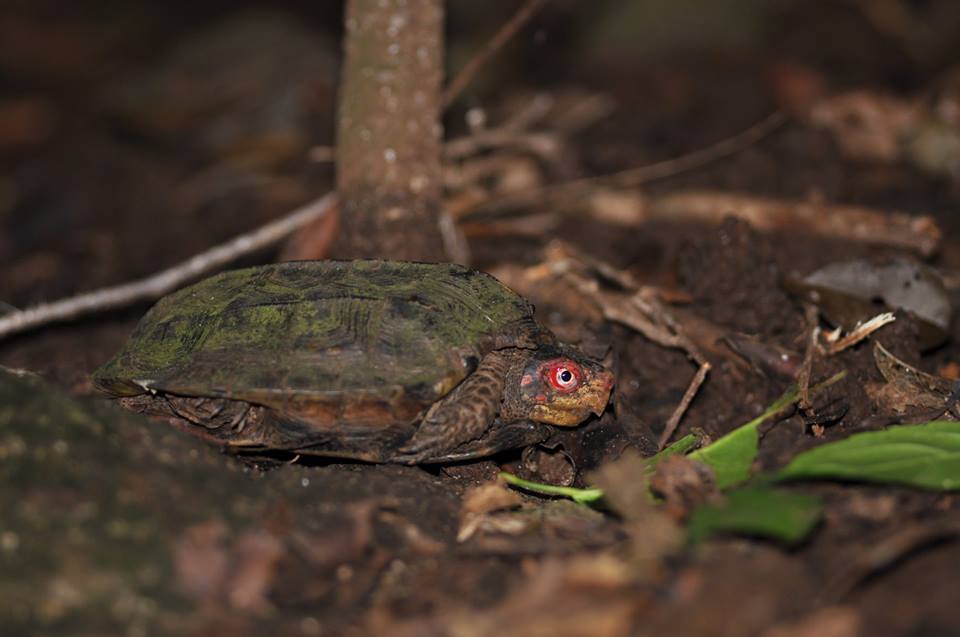
The Forest Cane Turtles are forest dwelling and restricted to the dense evergreen forests of the Western Ghats. They feed mainly on invertebrates living in the leaf litter like beetles, millipedes, earthworms, snails, etc. The Forest Cane Turtles are also known to feed on large snails like Indrella ampulla. Their diet also consists of plant material including seeds, leaves, fruits, and mushrooms. They feed on fruits of figs (Ficus sp.,), orangeberry (Glycosmis arborea;), Blume (Diospyros buxifolia) to name a few. Unlike other water-loving turtles and tortoises, these turtles are found away from the perennial water source. Areas with a dense canopy and rocky terrain are their favourite spots. They are largely nocturnal in habit and highly restricted to the evergreen patches only. They breed during the monsoon, and lay eggs in a nest that is deep beneath the soil.
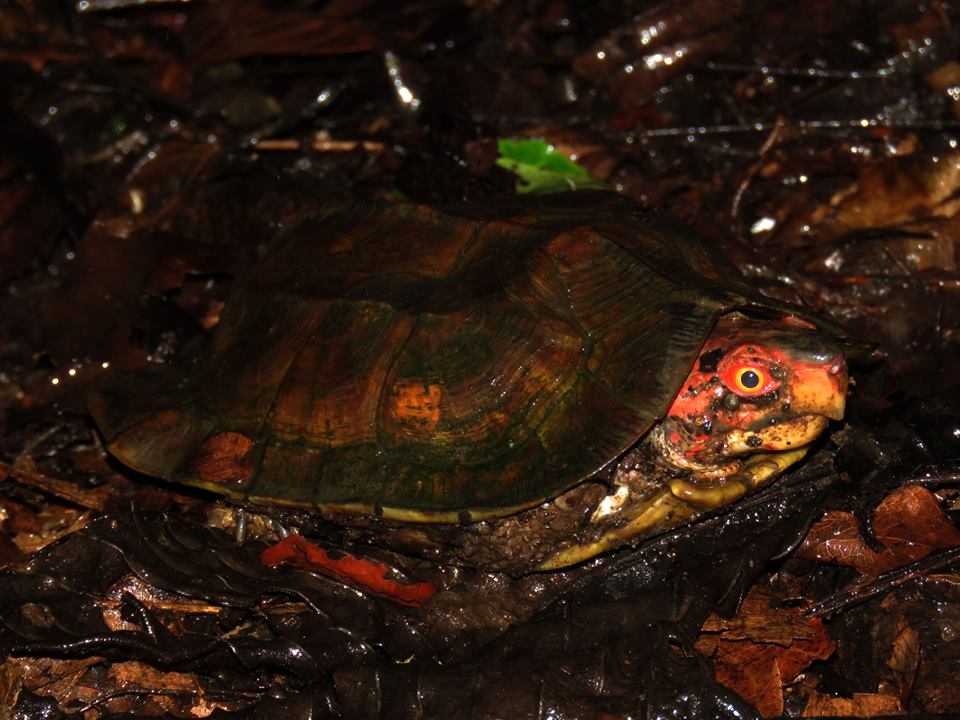
This species has a remarkable importance in the field of herpetology. It was first described by a British naturalist Henderson in the year1912. He named the species Geoemyda silvatica. The second time it rediscovered was only after 70 years by Jaganath Vijaya – India’s first woman herpetologist, who then studied this turtle in detail. In honour of late Vijaya’s contribution towards ecology and conservation of cane turtle, the species was lately renamed as Vijayachelys silvatica. Recently, cane turtle sightings have been reported from the other forests of Karnataka, Kerala and Tamil Nadu too.
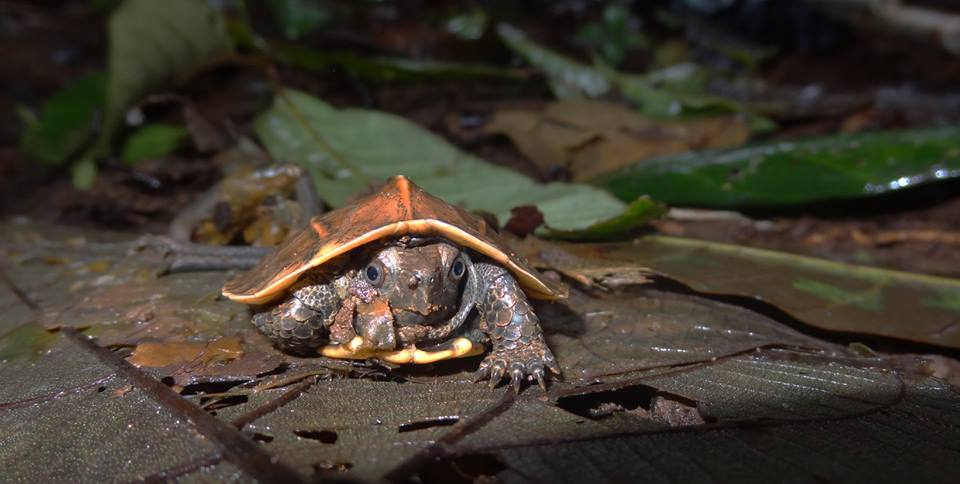
The vibrant, bio-diverse rich landscape of the Anamalai Hills has always been a fascinating place and a have astonished nature enthusiasts and wildlife biologists alike. While walking through the misty forests of the Anamalais, special encounters of such rare and beautiful creatures are worth the effort of bearing the uneasiness of drenched clothes and tired legs. This magnificent sighting of the cane turtle will always remain an enduring icon of Anamalais for me.
Conservation Status:
Being one of the rare species that occur in the Western Ghats chain of mountains, Forest Cane Turtle are considered to be globally endangered by IUCN. Their populations are highly fragmented and occur in very few geographic locations. The species bear a very high risk of population decline due to reduction in quality habitat.
Threats:
Since Forest Cane Turtles are very sensitive to changes in their habitat, the disturbance and degradation of evergreen forests is the biggest threat they face. Apart from that, they are also hunted for their meat by many tribal communities who are native to the Western Ghats, causing a direct threat to their population. Using dogs to find this cryptic species for its meat consumption used to be a common practice among tribals. The species has been given utmost legal protection under Schedule-I of the Wildlife (Protection) Act, 1972.




